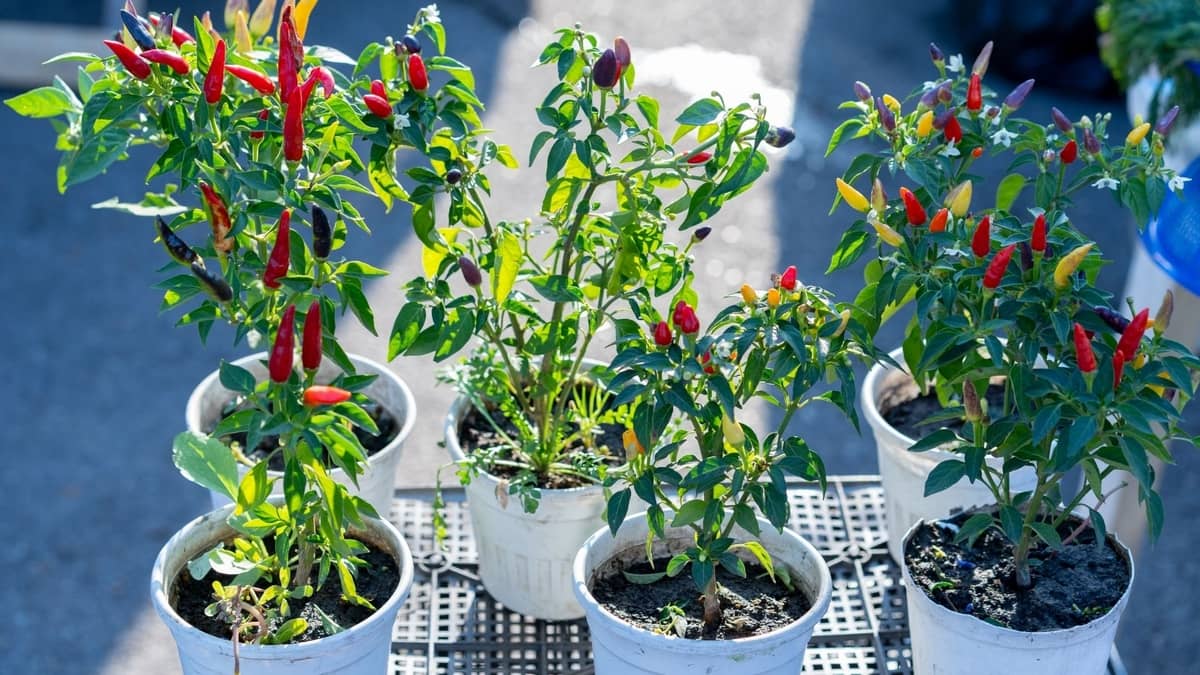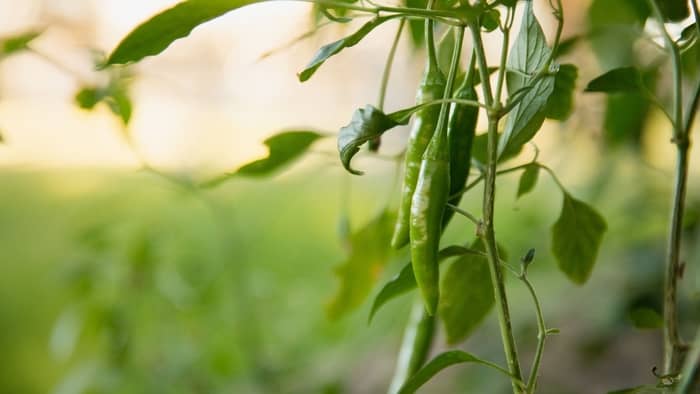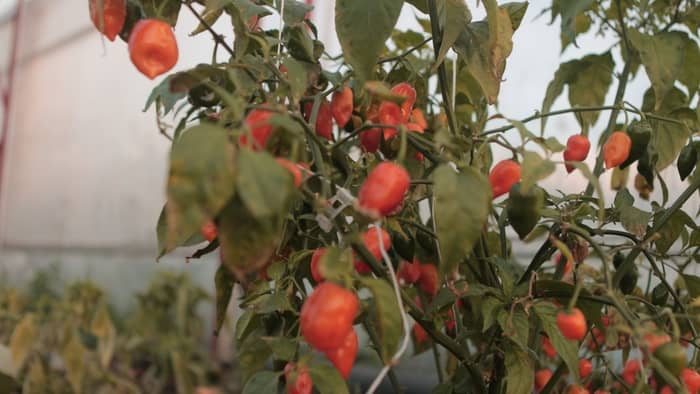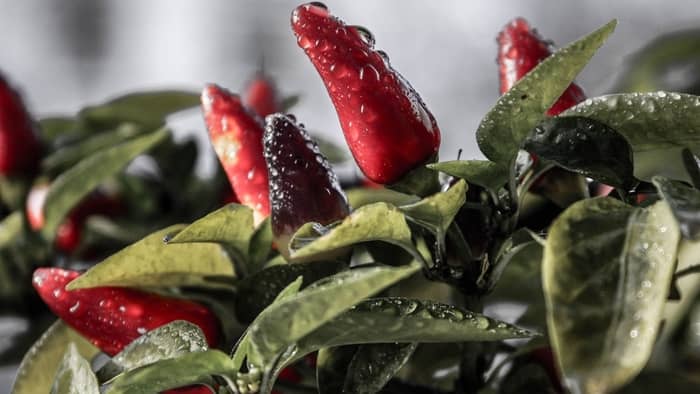Last Updated on January 17, 2022 by Guillermina
Hot peppers are one of the favorite spices around the world. Click to find out all the details about the best hot peppers to grow indoors.
From sweet, crisp peppers in rainbow shades to hot ones that make your eyes water, peppers are an ideal decoration for households around the world. There are many different types of peppers that can be grown in your gardens as well as indoors. Growing hot peppers indoors is not a new sensation; moreover, it has been going on for decades.
Thinking about planting in a container, but not sure which variety to choose? Keep reading to find all about the best hot peppers to grow indoors.
Can You Grow Hot Peppers Indoors Year-Round?
Growing hot peppers indoors is very easy as long as you provide them with good growing conditions. In addition, they are perennials but can thrive all year round.
Best Peppers To Grow In Containers
Want to know which are the best hot peppers to grow indoors? Here are our favorite varieties that do well in pots.
Anaheim Pepper
Scoville Heat Units: 500-2,500 SHU
Capsicum Annuum
This type of chili pepper is named after the California town of Anaheim. This is mild, medium-sized chili pepper. It grows up to 6-10 inches in length and is most commonly used for cooking. As for the colors, they vary to dark green and reddish.
Cayenne Pepper
Scoville Heat Units: 30,000 – 50,000 SHU
Capsicum Annuum
Cayenne is a very popular pepper whose name is taken from the city of Cayenne in French Guiana. It is a bright red chili pepper that is 2-5 inches long and about 1/2 inch in diameter. Cayenne is most often used in dried form as a tasty addition to dishes.
Habanero Pepper
Scoville Heat Units: 100,000 – 350,000 SHU
Capsicum Chinense
Habanero peppers are native to South American regions as well as Belize, Costa Rica, and parts of the United States. This variety of hot pepper is known for its heat, as well as for its hints of citrus and fruity-floral aroma. It is an integral part of hot sauces and other spicy foods.
Tabasco Pepper
Scoville Heat Units: 30,000 – 50,000 SHU
Capsicum Frutescens
Tabasco Pepper owes its name to a state in Mexico. It is tapered and usually grows less than 2 inches. As for the color, it has a creamy yellow and becomes bright red as it matures. This variety of pepper is best known for being one of the most important ingredients of the famous Tabasco sauce.
Hot Paprika
Scoville Heat Units: up to 590 SHU
Capsicum Annuum
Hot paprika is mild to a moderate variety of pepper. It is most commonly used to spice up dishes instead of simply for the tangy flavor. It is especially understood in dishes such as curry, soups, and stews because it gives them a classic reddish hue that looks extremely delicious and appetizing.
Jalapeno Pepper
Scoville Heat Units: 2,500 – 8,000 SHU
Capsicum Annuum
If you have been wondering which hot pepper is the easiest to grow, the answer is Jalapeno pepper. Jalapeno pepper is a hot pepper of medium size that grows 2 to 3.5 inches in length, but sometimes even longer than that. It is popular because of its characteristic taste and mild heat level – hot, but not too hot. Jalapenos were originally grown in Veracruz, Mexico, hence the name.
Thai Pepper
Scoville Heat Units: From 0 to 50,000 or even 100,000 SHU
Capsicum Annuum
Did you know that there are at least 79 different types of Thai pepper? – Hence the great variety in their spiciness. They are usually ground from fresh pods to add heat to curry pastes.
These are the most popular varieties of Thai pepper:
- Prik Chee Fah – mild,
- Prik Leuang – milder heat,
- Yuak – milder, sweet,
- Prik Jinda – hot,
- Prik Kee Noo – very hot.
Chili Pepper
Scoville Heat Units: up to a million SHU, sometimes more than that
Mostly Capsicum Annuum
Chili peppers are native to America but can be grown in all parts of the world. They are an essential ingredient in many world cuisines, especially when it comes to Mexican. As for the varieties, there are many of them and they often have different names depending on the region in which they are grown.
These are the most famous types of Chili peppers:
- African Bird’s Eye,
- Bahamian Chili Peppers,
- Carolina Cayenne Chili Peppers,
- Devil’s Tongue Pepper,
- Fatalii Chili Peppers,
- Happy Pepper,
- Jamaican Hot Chili Peppers,
- Madame Jeanette Chili Peppers.
What Do You Need To Grow Hot Peppers Indoors?
These are ideal indoor environments for growing peppers.
Soil: Choose quality soil or potting mix to give the peppers good drainage.
Watering: Try to keep the soil moist, but don’t water the peppers too much.
Temperature: Ideal growing temperatures are: daytime between 65 ° to 80 ° F (18 to 26 ° C) and nighttime between 60 ° to 70 ° F (15 ° to 21 ° C).
Light: Hot peppers prefer 14 to 16 hours of sun a day. If you use supplemental artificial light, place it at least seven inches above the canopy.
pH Level: 5.9 to 6.5 pH.
Fertilizer: A good 5-10-10 fertilizer is usually more than enough to grow healthy peppers.
Harvesting
Some peppers bear fruit within 30 to 60 days. However, some of the super-hot varieties can take up to 150 days. The best thing about growing hot peppers indoors is that you don’t have to be afraid of seasonal temperature changes.
When you notice that your peppers have achieved the desired color and spiciness, it is finally time to harvest! How? Simply snip them with garden shears.
To Wrap Things Up
Most gardeners have a love/hate relationship with peppers; they either love or hate them, rarely there is a middle ground. However, those who love them are most passionate about the growing process. Hot peppers are not difficult to grow; they just need well-drained soil, water, and sun (as well as your attention).
We hope you found this article on the best hot peppers for growing indoors useful.
What are your experiences with hot peppers? Let us know in the section below.
Read more about How To Grow A Mandarin Orange Tree Indoors.





